- Campus Flora
- ✓ Herbs
- ✓ Shrubs
- ✓ Trees
- ✓ Contributers
CAMPUS SHRUBS
Biodiversity in our school
| Family | Apocyanaceae |
|---|---|
| Taxonomic position | Plantae >Tracheophyta >Magnoliopsida >Gentianales >Apocynaceae >Allamanda >Allamanda cathartica L. |
| Common Name | Kolaambi |
| Vernacular Name | കോളാമ്പി |
| Habit | Shrub |
| Habitat | Cultivated |
| Nativity | Bolivia, Brazil (North, Northeast, South, Southeast, West-Central), Colombia, Costa Rica, French Guiana, Guyana |
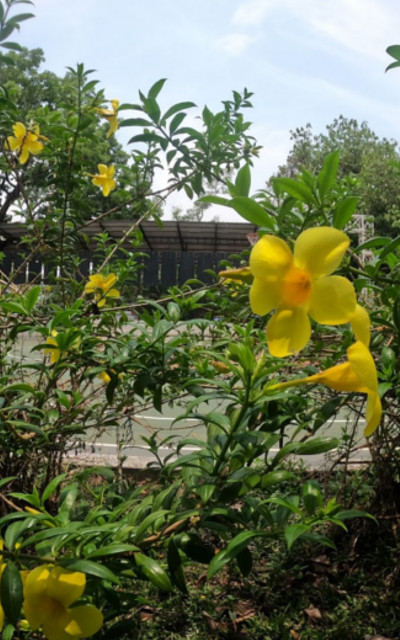 Description: An ever green scandent shrub; branches circular, smooth and green. Leaves in whorls of 4 or opposite, oblong, obovate or oblanceolate.Flower showy, bright yellow. c. 8 cm in diameter. Sepals 5, lanceolate-ovate, acuminate, glabrous, c. 7-10 mm long. Corolla tube c.2.5 cm long, throat infundibuliform.
Description: An ever green scandent shrub; branches circular, smooth and green. Leaves in whorls of 4 or opposite, oblong, obovate or oblanceolate.Flower showy, bright yellow. c. 8 cm in diameter. Sepals 5, lanceolate-ovate, acuminate, glabrous, c. 7-10 mm long. Corolla tube c.2.5 cm long, throat infundibuliform.
| Uses | Traditional medicine,Ornamental plant |
|---|---|
| Flowering and Fruiting | All year round in warm climates |
| Distribution | Assam,Brazil, French Guiana, Guyana, Suriname, and Venezuela |
| Conservation Status | No threats |
| References | https://indiabiodiversity.org https://powo.science.kew.org |
| Family | Nyctaginaceae |
|---|---|
| Taxonomic position | Plantae >Tracheophyta >Equisetopsida >Caryophyllales >Nyctaginaceae>Bougainvillea>Bougainvillea spectabilis Willd. |
| Common Name | Great bougainvillea |
| Vernacular Name | Paper flower |
| Habit | Shrub |
| Habitat | General Habitat |
| Nativity | South America,Brazil, Peru, Bolivia, Argentina, and Paraguay. |
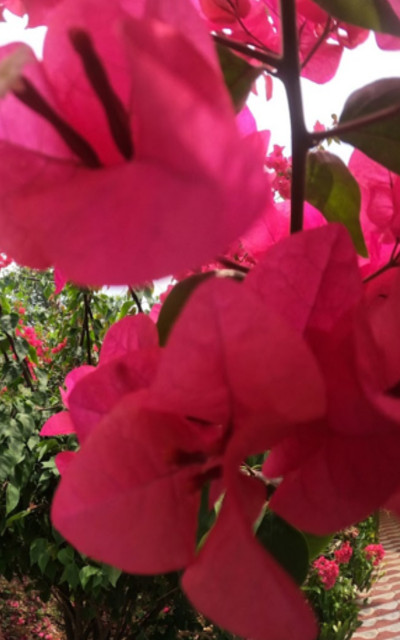 Description: Bougainvillea is a genus of thorny ornamental vines, bushes, and trees belonging to the four o'clock family, Nyctaginaceae. It's known for its vibrant display of colorful bracts that many mistake for flowers.
Description: Bougainvillea is a genus of thorny ornamental vines, bushes, and trees belonging to the four o'clock family, Nyctaginaceae. It's known for its vibrant display of colorful bracts that many mistake for flowers.
| Uses | Bougainvillea boasts a variety of uses, both ornamental and potentially medicinal. |
|---|---|
| Flowering and Fruiting | All year round |
| Distribution | Assam, Bihar, Gujarat; Brazil |
| Conservation Status | Doesn't have a formal conservation status assigned by international organizations like IUCN (International Union for Conservation of Nature). |
| References | https://indiabiodiversity.org https://powo.science.kew.org |
| Family | Apocynaceae. |
|---|---|
| Taxonomic position | Plantae >Tracheophyta > Magnoliopsida > Gentianales > Apocynaceae > Catharanthus > Catharanthus roseus (L.) G. Don |
| Common Name | Madagascar periwinkle |
| Vernacular Name | ശവംനാരി |
| Habit | Shrub |
| Habitat | Cosmopolitian |
| Nativity | Madagascar |
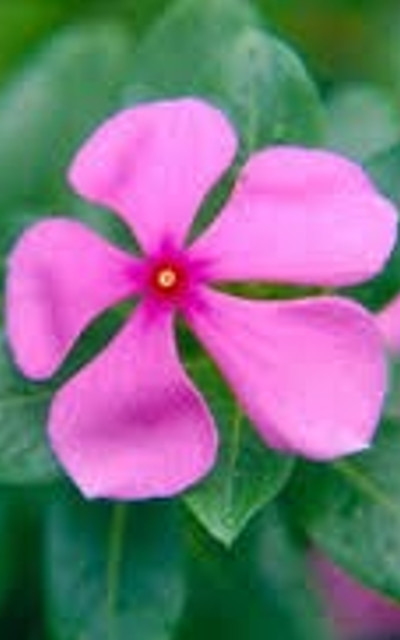 Description: Catharanthus roseus is a short-lived perennial.The most common Catharanthus species is Catharanthus roseus formerly known as Vinca rosea. Catharanthus roseus flowers come in a vibrant range, including shades of pink, white, red, lilac, and even bicolor varieties.The flowers have a trumpet or funnel-like shape with five flattened petal lobes.
Description: Catharanthus roseus is a short-lived perennial.The most common Catharanthus species is Catharanthus roseus formerly known as Vinca rosea. Catharanthus roseus flowers come in a vibrant range, including shades of pink, white, red, lilac, and even bicolor varieties.The flowers have a trumpet or funnel-like shape with five flattened petal lobes.
| Uses | It's the source of vincristine and vinblastine, important drugs used to treat various cancers.While medicinally valuable, all parts of the Catharanthus roseus plant are poisonous if ingested. |
|---|---|
| Flowering and Fruiting | Blooms year-round |
| Distribution | Assam, Bihar, Karnataka, Gujarat, Maharastra,madhya Pradesh, Uttar Pradesh; Madagascar ,Bongaigaon, Kamrup |
| Conservation Status | Not extinct |
| References | https://indiabiodiversity.org https://powo.science.kew.org |
| Family | Asteraceae |
|---|---|
| Taxonomic position | Plantae > Tracheophyta>Magnoliopsida >Asterales >Asteraceae >Chromolaena>Chromolaena odorata (L.) R.M.King & H.Rob. |
| Common Name | Venapacha |
| Vernacular Name | കമ്മ്യുണിസ്റ്റ് പച്ച |
| Habit | Shrub |
| Habitat | Mixed deciduous forest.A weed in all terrestrial habitats |
| Nativity | A native of the South American tropics |
 Description: This flowering shrub is native to north and central America, and has been introduced to parts of Asia, Africa and Australia. It spreads very rapidly after disturbances like fire or clearing of land for agriculture, and suppresses the growth of native understorey species. It is a perennial herb that has wind dispersed seeds, that can also attach to fur, clothes, etc and this facilitates long distance seed dispersal
Description: This flowering shrub is native to north and central America, and has been introduced to parts of Asia, Africa and Australia. It spreads very rapidly after disturbances like fire or clearing of land for agriculture, and suppresses the growth of native understorey species. It is a perennial herb that has wind dispersed seeds, that can also attach to fur, clothes, etc and this facilitates long distance seed dispersal
| Uses | Used in Folk medicine. |
|---|---|
| Flowering and Fruiting | November-May. |
| Distribution | In India: Assam, Karnataka, Manipur, Odisha; America. |
| Conservation Status | Not known. |
| References | https://indiabiodiversity.org https://powo.science.kew.org |
| Family | Rutaceae |
|---|---|
| Taxonomic position | Plantae >Tracheophyta >Magnoliopsida >Sapindales >Rutace > Citrus > Citrus aurantifolia |
| Common Name | Lime |
| Vernacular Name | നാരകം |
| Habit | Shrub to Small tree |
| Habitat | tropical to subtropical climates |
| Nativity | Native of Malaysia . Cultivated in India |
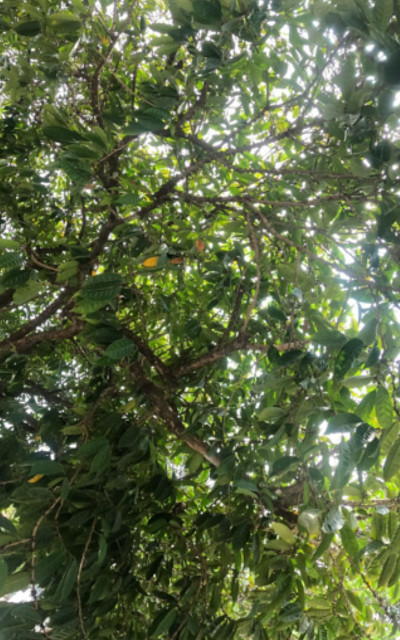 Description: Citrus aurantifolia typically grows to a height of 2 to 5 meters , although it can reach up to 6 meters.The tree has thorny branches and glossy, dark green leaves that emit a citrusy fragrance when crushed. The fruit of Citrus aurantifolia is small, round to oval-shaped, and usually measures about 3 to 6 centimeters in diameter. When unripe, the fruit is green, turning yellow when ripe. The rind is thin and smooth, and the flesh is juicy, acidic, and aromatic. The seeds are small and ovoid. The tree produces fragrant white flowers with five petals, often appearing in clusters.
Description: Citrus aurantifolia typically grows to a height of 2 to 5 meters , although it can reach up to 6 meters.The tree has thorny branches and glossy, dark green leaves that emit a citrusy fragrance when crushed. The fruit of Citrus aurantifolia is small, round to oval-shaped, and usually measures about 3 to 6 centimeters in diameter. When unripe, the fruit is green, turning yellow when ripe. The rind is thin and smooth, and the flesh is juicy, acidic, and aromatic. The seeds are small and ovoid. The tree produces fragrant white flowers with five petals, often appearing in clusters.
| Uses | Juice , Digestive aid & Vitamin C Source |
|---|---|
| Flowering and Fruiting | March to June and August to October |
| Distribution | Malaysia, Indonesia, and India. |
| Conservation Status | is not as the IUCN List of Threatened Species. |
| References | https://indiabiodiversity.org https://powo.science.kew.org |
| Family | Asparagaceae |
|---|---|
| Taxonomic position | Plantae > Asparagales > Asparagaceae > Lomandroideae > Cordyline > Cordyline fruticosa (L.) |
| Common Name | Good Luck Plant |
| Vernacular Name | കാണാമുള്ളി |
| Habit | Shrub |
| Habitat | Grown as garden plant |
| Nativity | Malaysia, Indonesia, Papua New Guinea, and the Philippines. |
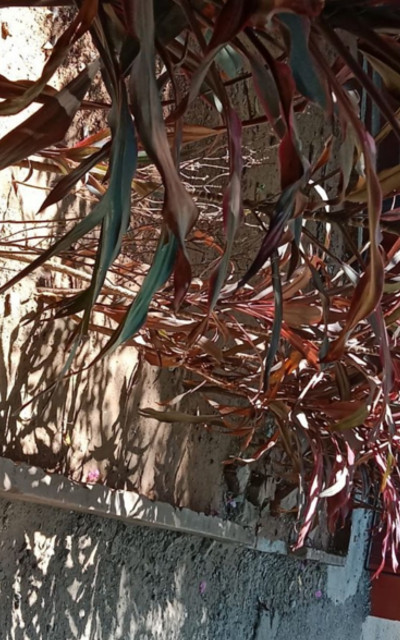 Description: Cordyline fruticosa, formerly known as Cordyline terminalis, is a species of flowering plant in the Asparagus family, Asparagaceae. It is native to tropical regions of Southeast Asia, Papua New Guinea, Australia, and various Pacific Islands. Cordyline fruticosa is commonly cultivated as an ornamental plant for its attractive foliage and colorful leaves.
Description: Cordyline fruticosa, formerly known as Cordyline terminalis, is a species of flowering plant in the Asparagus family, Asparagaceae. It is native to tropical regions of Southeast Asia, Papua New Guinea, Australia, and various Pacific Islands. Cordyline fruticosa is commonly cultivated as an ornamental plant for its attractive foliage and colorful leaves.
| Uses | Ornamental Plant |
|---|---|
| Flowering and Fruiting | March-April |
| Distribution | Tropical South East Asia, Australia and Pacific Island |
| Conservation Status | Cordyline fruticosa is not considered threatened or endangered |
| References | https://indiabiodiversity.org https://powo.science.kew.org |
| Family | Rubiaceae |
|---|---|
| Taxonomic position | Plantae >Tracheophyta > Magnoliopsida > Gentianales > Rubiaceae > Ixora > Ixora coccinea L |
| Common Name | Needle flower,Flame of the woods |
| Vernacular Name | ചെത്തി |
| Habit | Shrub |
| Habitat | Open areas |
| Nativity | West and south India, Sri Lanka, Bangladesh to Indo china |
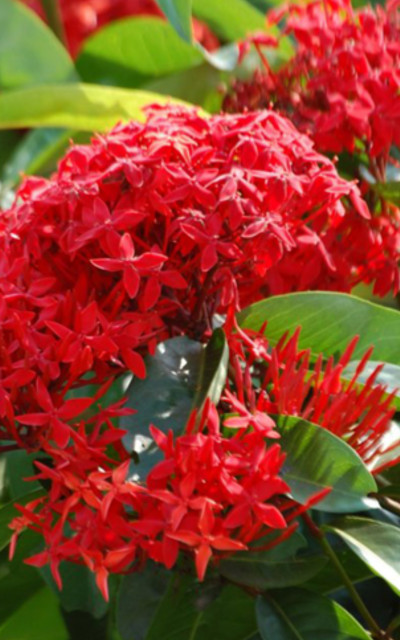 Description: A dense multi-branching evergreen shrub that is notable for its brightly colored blooms. The scarlet, tubular flowers grow in dense rounded clusters and can bloom year-round in the right conditions. Ixora coccinea is a member of the Rubiaceae family and is a showy relative of coffee.
Description: A dense multi-branching evergreen shrub that is notable for its brightly colored blooms. The scarlet, tubular flowers grow in dense rounded clusters and can bloom year-round in the right conditions. Ixora coccinea is a member of the Rubiaceae family and is a showy relative of coffee.
| Uses | The flowers, leaves, roots, and the stem are used to treat various ailments in the Indian traditional system of medicine, the Ayurveda, and in various folk medicines, in traditional Indian medicine the fusion of juice leaves and the fruit of Ixora coccinea is used to care for dysentery, ulcers and gonorrhea. |
|---|---|
| Flowering and Fruiting | Througout the year but best during the rains |
| Distribution | Andaman Is., Belize, Borneo, Caroline Is., Colombia, Comoros, Costa Rica, East Himalaya, El Salvador, Fiji, Gambia, Gilbert Is., Gulf of Guinea Is., Honduras, Malaya, Marianas, Marshall Is., Mexico Southeast, Nicaragua, Panamá, Queensland, Senegal, Western Australia |
| Conservation Status | Not known |
| References | https://indiabiodiversity.org https://powo.science.kew.org |
| Family | Arecaceae |
|---|---|
| Taxonomic position | Plantae>Tracheophytes > Angiosperms > Monocots >Commelinids > Arecales >Arecaceae >Trachycarpeae > Licuala> Licuala grandis |
| Common Name | Ruffled fan palm. |
| Vernacular Name | Ruffled Fan Palm |
| Habit | Shrub |
| Habitat | understory of primary and secondary tropical rain forests. |
| Nativity | tropical rainforests of Southeast Asia |
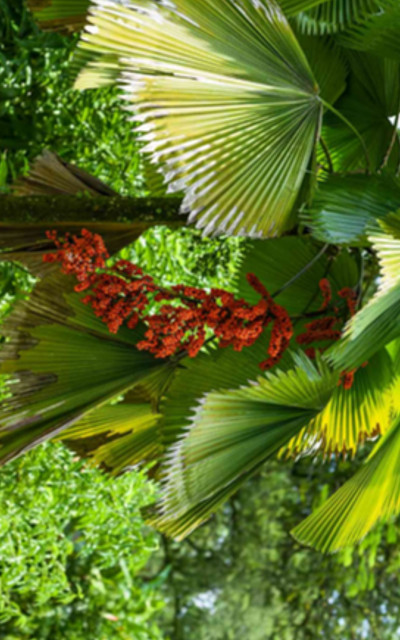 Description: Licuala grandis, commonly known as the ruffled fan palm, Vanuatu fan palm, or Palas palm, is a slow-growing, small palm tree with a solitary trunk that can reach up to 3 meters
Description: Licuala grandis, commonly known as the ruffled fan palm, Vanuatu fan palm, or Palas palm, is a slow-growing, small palm tree with a solitary trunk that can reach up to 3 meters
| Uses | Ornamental Use &Traditional Use |
|---|---|
| Flowering and Fruiting | June to August. |
| Distribution | Grows primarily in the wet tropical biome. |
| Conservation Status | Not known |
| References | https://indiabiodiversity.org https://powo.science.kew.org |
| Family | Musaceae |
|---|---|
| Taxonomic position | Plantae> Tracheophyta> Liliopsida> Zingiberales> Musaceae> Musa> Musa paradisiaca L. |
| Common Name | Banana Plant |
| Vernacular Name | വാഴ |
| Habit | clumped in habit |
| Habitat | Tropical Climate Conditions |
| Nativity | Southeast Asia |
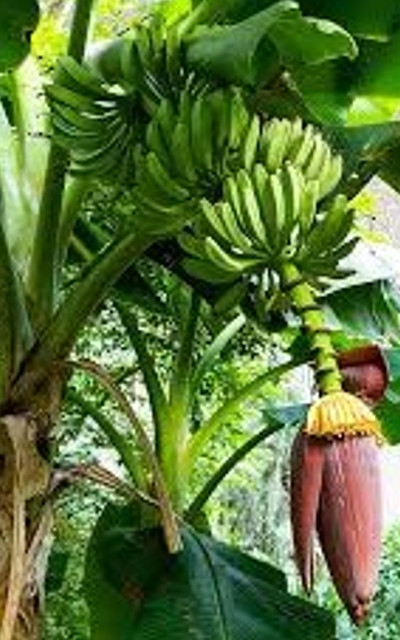 Description: Musa paradisiaca L., commonly known as the banana plant, isn't technically a tree but a giant herbaceous plant. Despite its size, reaching up to 9 meters (30 feet) tall, it has a soft, fleshy "trunk" called a pseudostem formed from its tightly wrapped leaf sheaths. The true star of the show is the oblong, fleshy fruit we know as a banana, borne in large drooping clusters. Towering above these are the banana plant's true claim to fame: massive, elongated, bright green leaves with prominent central ribs.
Description: Musa paradisiaca L., commonly known as the banana plant, isn't technically a tree but a giant herbaceous plant. Despite its size, reaching up to 9 meters (30 feet) tall, it has a soft, fleshy "trunk" called a pseudostem formed from its tightly wrapped leaf sheaths. The true star of the show is the oblong, fleshy fruit we know as a banana, borne in large drooping clusters. Towering above these are the banana plant's true claim to fame: massive, elongated, bright green leaves with prominent central ribs.
| Uses | a starchy staple food source when eaten ripe or unripe, strong fibers woven into textiles, a source of building materials, animal fodder, and even potential medicinal uses in various cultures. |
|---|---|
| Flowering and Fruiting | throughout the year |
| Distribution | Assam |
| Conservation Status | Not Extinct |
| References | https://indiabiodiversity.org https://powo.science.kew.org |
| Family | Rubiaceae |
|---|---|
| Taxonomic position | Plantae>Tracheophyta>Magnoliopsida>Gentianales> Rubiaceae> Mussaenda>Mussaenda erythrophylla Schumach. & Thonn. |
| Common Name | Mussaenda |
| Vernacular Name | മുസണ്ട |
| Habit | shrub |
| Habitat | warmly temperate or subtropical areas |
| Nativity | Southeast Asia |
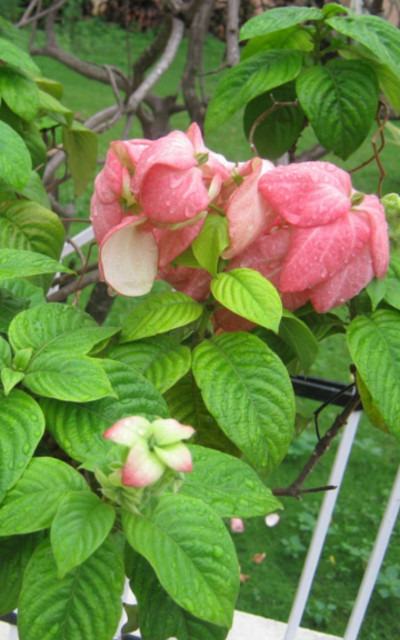 Description: The Mussaenda erythrophylla, also known as the Asian Wandelblume, Red Ivory Bush, Ashanti Blood, Red Flag Bush, or Tropical Dogwood, is a beautiful evergreen shrub native to West Africa. It's known for its showy and unusual flowers that bring a touch of the tropics to gardens and landscapes In some regions, parts of the plant are used in traditional medicine for various purposes, but scientific evidence to support these uses is lacking.
Description: The Mussaenda erythrophylla, also known as the Asian Wandelblume, Red Ivory Bush, Ashanti Blood, Red Flag Bush, or Tropical Dogwood, is a beautiful evergreen shrub native to West Africa. It's known for its showy and unusual flowers that bring a touch of the tropics to gardens and landscapes In some regions, parts of the plant are used in traditional medicine for various purposes, but scientific evidence to support these uses is lacking.
| Uses | Folk medicine |
|---|---|
| Flowering and Fruiting | March-August |
| Distribution | Thailand, Myanmar, and Laos (many tropical and subtropical regions around the world) |
| Conservation Status | Threats |
| References | https://indiabiodiversity.org https://powo.science.kew.org |
| Family | Lamiaceae |
|---|---|
| Taxonomic position | Plantae > Tracheophyta > Magnoliopsida > Lamiales > Lamiaceae > Ocimum > Ocimum tenuiflorum L. |
| Common Name | Krishna thulasi |
| Vernacular Name | കൃഷ്ണ തുളസി |
| Habit | aromatic shrub |
| Habitat | Sea level to an altitude of 2000 m |
| Nativity | uncertain, but it likely originated somewhere in tropical areas around central and south Asia |
 Description: Ocimum tenuiflorum, also commonly known as holy basil, tulsi, or sacred basil, is a perennial herb belonging to the Lamiaceae or mint family.Broadly elliptical with slightly toothed margins. Its Leaves range from 1.5 to 6 cm (0.6 to 2.4 inches) long and 1 to 2.5 cm (0.4 to 1 inch) wide. It is Covered in soft white hairs, giving them a fuzzy texture. Paired leaves with adjacent pairs growing at right angles to each other (decussate phyllotaxy) is its arrangement .When crushed, the leaves release a strong, musky scent with hints of mint and clove.
Description: Ocimum tenuiflorum, also commonly known as holy basil, tulsi, or sacred basil, is a perennial herb belonging to the Lamiaceae or mint family.Broadly elliptical with slightly toothed margins. Its Leaves range from 1.5 to 6 cm (0.6 to 2.4 inches) long and 1 to 2.5 cm (0.4 to 1 inch) wide. It is Covered in soft white hairs, giving them a fuzzy texture. Paired leaves with adjacent pairs growing at right angles to each other (decussate phyllotaxy) is its arrangement .When crushed, the leaves release a strong, musky scent with hints of mint and clove.
| Uses | Flowering agent,traditional medicine,essential oil,insect repellent. |
|---|---|
| Flowering and Fruiting | Flowering peak during November-January.Fruiting throughout the year. |
| Distribution | India: Assam, Bihar, Madhya Pradesh,uttar Pradesh |
| Conservation Status | Not known |
| References | https://indiabiodiversity.org https://powo.science.kew.org |
| Family | Apocynaceae |
|---|---|
| Taxonomic position | kingdom Plantae > Order Gentianales > Family Apocynaceae> Genus Plumeria> Species Plumeria pudica |
| Common Name | Bridal bouquet |
| Vernacular Name | വെള്ളചെമ്പകം |
| Habit | shrub or tree |
| Habitat | coastal areas, savannas, and disturbed habitats. |
| Nativity | Caribbean |
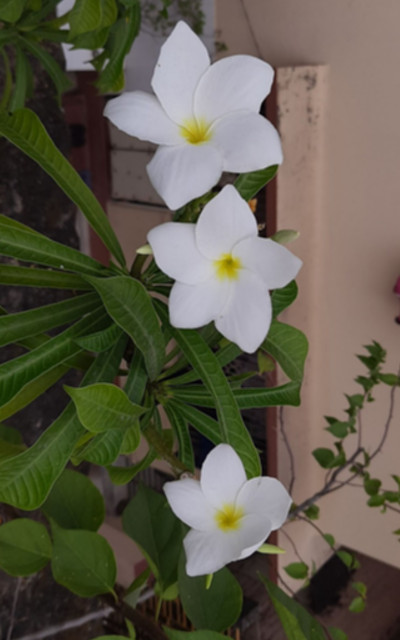 Description: Plumeria pudica is a small to medium-sized shrub or tree, typically reaching heights of 2 to 5 meters The leaves are leathery, elongated, and lanceolate in shape, with a distinctive fiddle-like appearance, hence the common name "Fiddle leaf plumeria.The flowers are typically white or pale yellow and have a unique shape, with elongated petals arranged in a pinwheel-like fashion. The flowers are borne in clusters at the tips of branches.The fruit of Plumeria pudica is a slender, elongated pod containing seeds.
Description: Plumeria pudica is a small to medium-sized shrub or tree, typically reaching heights of 2 to 5 meters The leaves are leathery, elongated, and lanceolate in shape, with a distinctive fiddle-like appearance, hence the common name "Fiddle leaf plumeria.The flowers are typically white or pale yellow and have a unique shape, with elongated petals arranged in a pinwheel-like fashion. The flowers are borne in clusters at the tips of branches.The fruit of Plumeria pudica is a slender, elongated pod containing seeds.
| Uses | Ornamental |
|---|---|
| Flowering and Fruiting | Throughout the year |
| Distribution | Central and South America And Southeast Asia |
| Conservation Status | Plumeria pudica is not listed on major conservation status of IUCN Red List. |
| References | https://indiabiodiversity.org https://powo.science.kew.org |
| Family | Asparagaceae |
|---|---|
| Taxonomic position | Plantae > Tracheophyta > Liliopsida > Asparagales > Asparagaceae > Sansevieria > Sansevieria trifasciata Prain |
| Common Name | Snake plant |
| Vernacular Name | Mother-in-law tongue |
| Habit | plentiful sunlight |
| Habitat | Native to West and West Central Africa |
| Nativity | tropical regions of Africa, specifically countries bordering the Indian Ocean like Madagascar, Mozambique, and Angola. |
 Description: Upright, sword-shaped leaves with a pointed tip, typically green with lighter green or gray bands.Thrives in low light, perfect for forgetful plant owners.Needs infrequent watering, tolerates drought well.Small, greenish-white, bloom occasionally in spring/summer indoors.
Description: Upright, sword-shaped leaves with a pointed tip, typically green with lighter green or gray bands.Thrives in low light, perfect for forgetful plant owners.Needs infrequent watering, tolerates drought well.Small, greenish-white, bloom occasionally in spring/summer indoors.
| Uses | Folk medicine, traditional chinease medicine |
|---|---|
| Flowering and Fruiting | rare occurrence |
| Distribution | West Africa |
| Conservation Status | Not threatened |
| References | https://indiabiodiversity.org https://powo.science.kew.org |